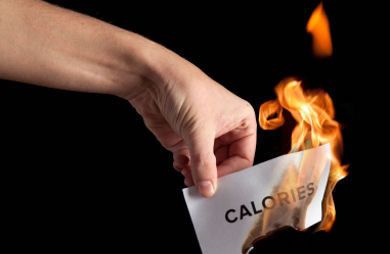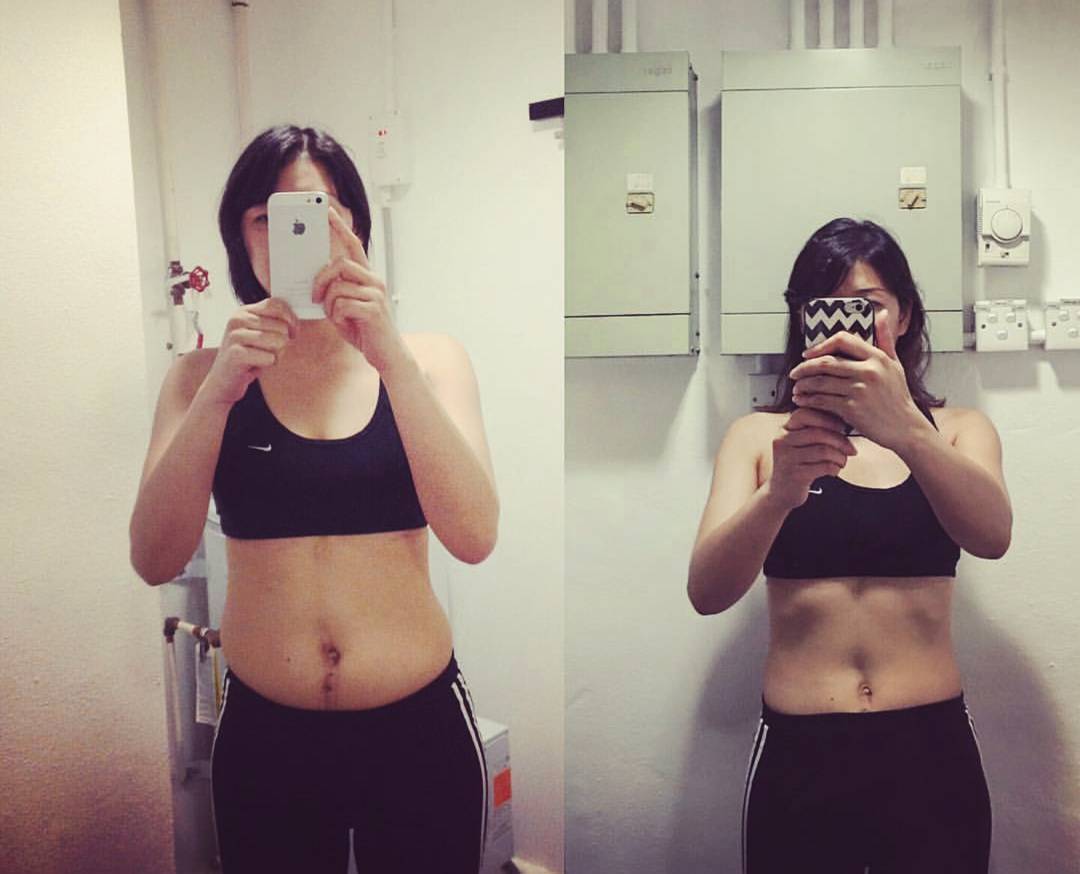Today’s topic is courtesy of This American Life’s Podcast episode ‘Choosing Wrong’, exploring why people make the wrong choices even though the right one is lying in front of them. I found it interesting to see how people’s decisions could be so influenced by social pressure, even if it went against their common sense and personal goals. I’ll come back to the social theory behind this behaviour later, but the point of this is that it had me thinking about the way that the general population thinks about exercising.
Again, it is interesting how people’s ideas of what a ‘good’ workout should be are largely dictated by the fitness industry. I guess we shouldn’t be surprised given how advertising and media generally sets our standards and, granted, most people probably don’t put so much thought into their workouts (that’s what the personal trainer is for, right?).
To me the group mentality regarding exercise seems to be this: it wasn’t a good workout if it wasn’t physically hard. Not hard as in challenging. Hard as in one torturous hour where every minute is a constant struggle towards a finish line that never seems any closer. And the one and only purpose? Burning calories, a phrase that has become a staple in every group class description and personal training advertisement.

It seems like we’ve forgotten to ask the most basic thing. Why does it have to be hard? What are we burning calories for?
Physical Education 101
It seems to me that it would be more beneficial to treat our physical education the same way that we do our mental one. Our bodies are more than just objects that house our brains. Treat it like a tool for learning, just the same way that your mind is (which might be a redundant thing to say since your mind is part of your body, as well as being stimulated and involved in physical activity).
What, exactly, are we learning? The general answer would be movement, but it could of course be more specific based on your goals and interests – it could be working on mobility to facilitate your Jiujitsu moves, say, or something more applicable to daily life like how to hold yourself better in order to combat that stiff neck from sitting at the office all day.
Let’s take a different tack and imagine if your child at primary school was forced to do only one subject: Physics. It doesn’t matter whether or not your kid is good at the subject in the first place. If Physics is their strong suit, great, but what about the holes that leaves in their general education? On the other hand, if your child is already weak at this subject, starting them at an advanced level won’t help them at all. I would compare this situation to where the majority of the general population is starting at the gym, given that most have immobilized their joints by spending their days sitting or standing. Movement has become an unnatural rather than natural thing to do, so that we have to step back all the way to the beginning and learn how to do it again.
The way that we tackle our mental education is to start with a well-rounded program focused on understanding the basics before moving on to specialize in an area that interests us, so why not apply the same principles to our physical education as well?
Rabbit, Turtle, Does It Even Matter?
Which brings me to one of my long-term clients Emma. This month she posted a transformation photo, but with the disclaimer that it isn’t that good of one because it was a one-year transformation rather than a dramatic 12 week one. I, on the other hand, have always been pleased with the progress that Emma has made during her year with Fitness Compass and was bothered that the ‘go-hard-or-go-home’ mentality that the industry pushes means that Emma’s transformation somehow doesn’t count because it wasn’t quick, hard, or intense.

She would be the first to say (gladly!) that her workouts aren’t the most frequent or intense, but there are so many more other factors that we can give credit to other than intensity. Emma is one of my most consistent clients, coming in as regular as clockwork every week as well as keeping track of her diet and working on cutting out sugar entirely.
Just as important as consistency is her being willing to focus on the process and progress in the gym more than results. As well as that, it’s always better when the client starts off knowing what they want and do not want. Emma knew that she didn’t like tough workouts from the start and that what she wanted to do was ease into exercising, since she had never had a background in the first place – not even, as she said, jumping rope during recess in primary school! So we were literally starting from zero. From a trainer’s point of view, it was great to have a clean slate to work on, since it’s more difficult to undo a bad habit than to teach a good one.
From a fitness industry standpoint, though, starting out by saying you don’t want to do a tough workout would be a big ‘no-no’. Let’s take a step back and look at the purpose behind planning a demanding workout though. The purpose is probably to get an obvious physical transformation within a short timeframe, which definitely requires strong willpower and stresses on the body in terms of diet and working out. Now, most of us don’t have bodybuilding contests or sporting competitions as a deadline to aim for, so the standard 12-week transformation seems unnecessarily arbitrary to me. Instead, aiming to improve and adapt your lifestyle in the long term seems like a more feasible, not to mention less torturous, path to take. In fact, studies have looked at how ‘The Biggest Loser’ contestants’ rapid weight losses didn’t make for long term results and damaged their metabolisms. It makes a compelling argument for taking the opposite road, one that is steadier and healthier, if slower.
Emma admits that whenever she tried to pick up exercising before she would give up because it was too hard. One year on, though, she is still going strong with twice weekly strength sessions, in fact feeling uneasy if she has to miss one due to a work trip or something unavoidable! She has come from not being able to hinge her hips back to deadlifting 40KG with perfect form, and this is because she had the patience to work on perfecting the basics and understanding the reason and mechanics behind each movement. Now she looks back and thinks it’s funny how she found pushups impossible to do and that squats used to hurt her knees.
For Emma, focusing on progress and learning about how to use her body to move was key to her progress – without even realising it, the physical transformation gradually followed after. And throughout it all, not one session that we would describe as torturous or difficult.
Just finding out what works for you, whether it’s in terms of lifestyle, style of workout, or what goals to focus on, will pay off in the long run. If you begin to enjoy the process, the commitment will come naturally!
Get to Know Your Body
Circling back to where we started, the following is a quote explaining sociologist Mark Granovetter’s “Threshold Model of Collective Behaviour” from Episode 590 of This American Life that I found interesting:
Now, what does Granovetter mean by that word, “threshold”? A belief is an internal thing. It’s a position we’ve taken in our head or in our heart.
But unlike beliefs, thresholds are external. They’re about peer pressure. Your threshold is the number of people who have to do something before you join in.
Granovetter makes two crucial arguments. The first is that thresholds and beliefs sometimes overlap. But a lot of the time, they don’t.
When your teenage son is driving 100 miles an hour at midnight with three of his friends in your Toyota Camry, it’s not because he believes that driving 100 miles per hour is a good idea. In that moment, his beliefs are irrelevant. His behavior is guided by his threshold.
An 18-year-old may be drunk at midnight in a car with three of his friends. That person has a really, really low threshold. It doesn’t take a lot of encouragement to get him to do something stupid.
Granovetter’s second point is just as important. Everyone’s threshold is different. There are plenty of radicals and troublemakers who might need only slight encouragement to throw that rock. Their threshold is really low.
But think about your grandmother. She might well need her sister, her grandchildren, her neighbors, her friends from church, all of them to be throwing rocks before she would even dream of joining in. She’s got a high threshold. The riot has to be going on for a very long time and has to involve a whole lot of people before grandma will join in. But there are times when even grandmothers might throw rocks through windows.
In the episode, Malcolm Gladwell used this theory to explain why basketballer Wilt Chamberlain decided not to shoot free throws with a ‘granny shot’, despite it being proven to be a more accurate way to throw.
You can listen to the Podcast for the full story, but that had me thinking: what is your threshold when it comes to working out? Do you just take that popular group class because your friends do, or force yourself through the pain doing the same lifts that big buff guy at your gym does so you can look like him? Or you might have hit upon what works for you as well – just some food for thought!
Take a week or two away from prescribed, cookie-cutter workout programs and take the time to understand what your body needs. What do you need to do to challenge it? What are the areas that you could improve on? How does it feel when your body is telling you that it needs to rest and recover?
Someone who does this really well is Max Shank, check out his suggestions for a program below, which focus on timed blocks of work where you work and rest as much as you need to within a set frame of time: The only strength and conditioning program you can do forever. Some of my other favourites are Karen Smith and Kellie Davis , two motivational and strong women who plan their workouts based on how their bodies feel for the day, with a focus on flow and technique rather than banging out the reps.
Do something different once in a while and you might be surprised that you can still learn a new thing or two about yourself even after all this time!
Great write up Tess!
LikeLike
thank you, that means a lot coming from you!
LikeLike
fabulous. another great article x
Yvonne
LikeLike